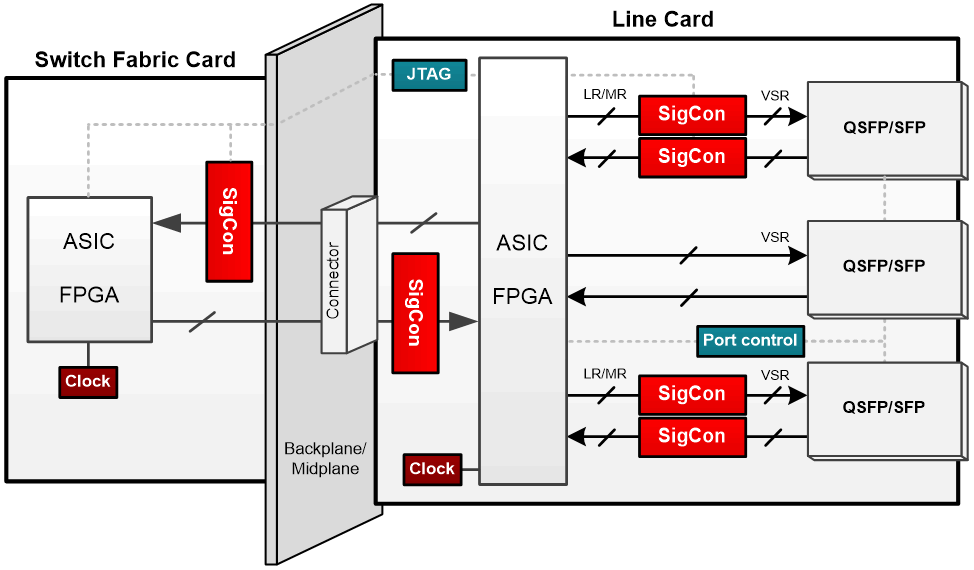SNLA388 June 2021 DS160PR410
2.4 Ethernet Interface
Ethernet is used in industrial PC communication modules and communication switch applications to inter-connect different industrial automation networks. Industrial communication switches are starting to adopt 1GbE, 10GbE, 25GbE interface and above to aggregate or distribute Ethernet traffic.
Ethernet data can be sent through front port optical or copper interfaces to remote devices, or sent through a backplane to another CPU or ASIC for processing. To deliver the best signal quality, a 10GbE redriver or retimer can be placed between the processor and front port interface or between ASIC through the back plane to compensate for the channel loss. DS110DF111 is an example of a high performance retimer with adaptive CTLE and decision feedback equalizer (DFE) that can be used for single port small form-factor pluggable (SFP) interface. It can provide up to 34dB equalization together with the CDR and transmit driver to overcome any signal impairment in data path and enable high reliability of the communication channel. DS100DF410 is a 4 channel retimer with similar performance, typically used at quad (4-channel) small form-factor pluggable (QSFP) interface for signal cleansing. The 10Gbps Ethernet redriver and retimer application report and Optimal implementation of 25G retimers vs redrivers provide more details on Ethernet redriver and retimer selections [VG1] and benefits. Adding a signal conditioner in the Ethernet data path can improve system interoperability and enable robust industrial communications.
The data aggregated and distributed by these 10Gb interfaces is tranceived via multiple, slower Ethernet PHYs. These PHYs must adhere to the same interoperability and conformance requirements addressed earlier, plus meet the robustness and timing requirements introduced in nodes further afield. For example, surviving unplanned electrical events during manufacturing (e.g. ESD) and during active operation (e.g. EFT) is critical to minimize both manufacturing and maintenance costs. In addition, deterministic timing characteristics provide optimal system accuracy, providing additional design headroom for other parts of the system. The DP83867IR and DP83867IS family provides multiple options to meet a specific system need, while providing industrial application level robustness and timing characteristics.
To maintain compliance to the synchronous Ethernet and the IEEE 1588 Precision Time Protocol standard, leverage TI’s ultra-low jitter and phase noise network synchronizers, including the LMK05318B, LMK5B12204, and LMK5C33216.
 Figure 2-7 10GbE Communication Switch
using Ethernet Retimer
Figure 2-7 10GbE Communication Switch
using Ethernet Retimer